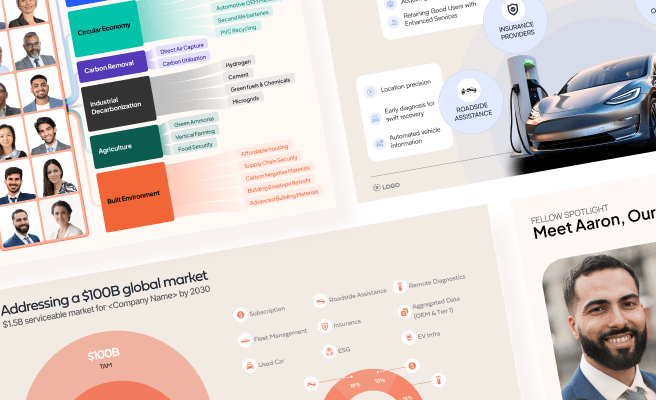Business Model
<p>A business model is a blueprint for how a company creates, delivers, and captures value. It encompasses the core aspects of a business, including its value proposition, target market, key activities, revenue streams, and cost structure. A well-defined business model serves as a roadmap for business strategy, guiding everything from product development to marketing and sales.</p>
<p>Historically, business models have evolved significantly. From the traditional brick-and-mortar stores to digital-first companies, the way businesses operate and generate revenue has transformed. For example, subscription-based models like those used by Netflix and SaaS companies have become increasingly popular due to their ability to provide a steady revenue stream.</p>
<h2>Key Components of a Business Model</h2>
<p>Understanding the essential components of a business model helps in designing effective strategies. Here are the main elements:</p>
<h3>1. Value Proposition</h3>
<p>The value proposition defines the unique value a company offers to its customers. It's the reason why customers choose one company over another. For instance, Tesla's value proposition lies in providing sustainable, high-performance electric vehicles.</p>
<h3>2. Target Market</h3>
<p>Identifying the target market is crucial for tailoring products and marketing efforts. This involves segmenting the market based on demographics, psychographics, and behavior. Climate tech companies, for instance, often target environmentally conscious consumers and organizations.</p>
<h3>3. Key Activities</h3>
<p>These are the primary actions a business must take to operate effectively. For a design company, this might include research, design, prototyping, and user testing.</p>
<h3>4. Revenue Streams</h3>
<p>Revenue streams represent the various sources of income for a business. Common models include direct sales, subscription fees, licensing, and brokerage fees. For example, Adobe generates revenue through subscriptions for its Creative Cloud software.</p>
<h3>5. Cost Structure</h3>
<p>The cost structure outlines the major expenses involved in operating the business. This includes fixed and variable costs such as salaries, rent, and materials. Efficiently managing costs is crucial for maintaining profitability.</p>
<h2>Types of Business Models</h2>
<p>There are several types of business models that companies can adopt based on their goals and market conditions:</p>
<h3>1. Subscription Model</h3>
<p>Companies charge customers a recurring fee, usually monthly or annually, for access to a product or service. This model is popular in SaaS, streaming services, and even consumer goods like meal kits.</p>
<h3>2. Freemium Model</h3>
<p>Businesses offer a basic version of their product for free while charging for premium features. This model is often used by software companies like Spotify and LinkedIn.</p>
<h3>3. Marketplace Model</h3>
<p>This model connects buyers and sellers, earning revenue through transaction fees or commissions. Examples include eBay, Airbnb, and Uber.</p>
<h3>4. Direct Sales Model</h3>
<p>Companies sell their products directly to consumers without intermediaries. This approach is commonly seen in D2C (direct-to-consumer) brands like Warby Parker and Dollar Shave Club.</p>
<h2>Challenges in Developing a Business Model</h2>
<p>Creating a successful business model comes with its own set of challenges:</p>
<h3>1. Market Fit</h3>
<p>Finding the right product-market fit is critical for success. This involves understanding customer needs and ensuring the value proposition aligns with those needs.</p>
<h3>2. Scalability</h3>
<p>A business model must be scalable to handle growth without compromising on quality or performance. This requires efficient processes and robust infrastructure.</p>
<h3>3. Competition</h3>
<p>Staying ahead of competitors requires continuous innovation and adaptation. Businesses must constantly evaluate their models and make necessary adjustments.</p>
<h2>Examples and Case Studies</h2>
<p>Real-world examples help illustrate the application of different business models:</p>
<h3>1. Tesla</h3>
<p>Tesla's business model focuses on direct sales and vertically integrated manufacturing. By selling directly to consumers, Tesla avoids dealership markups and maintains control over the customer experience. This model has allowed them to scale rapidly and innovate continuously.</p>
<h3>2. Netflix</h3>
<p>Netflix's subscription-based model revolutionized the media industry. By offering a vast library of content for a monthly fee, Netflix provides value through convenience and variety. This model has led to substantial user growth and predictable revenue.</p>
<h3>3. Beyond Meat</h3>
<p>In the climate tech sector, Beyond Meat has adopted a product-driven business model. They focus on creating plant-based meat alternatives that appeal to environmentally conscious consumers. This model addresses sustainability while catering to a growing market demand.</p>
<h2>Conclusion</h2>
<p>A robust business model is fundamental to a company's success. It defines how value is created, delivered, and captured, guiding strategic decisions and operations. By understanding and continuously refining their business models, companies can better meet customer needs, navigate challenges, and achieve sustainable growth.</p>
<p>For more insights on developing and optimizing business models, explore resources from <a href="https://www.strategyzer.com" style="color: #2896FF; text-decoration: underline;">Strategyzer</a> and <a href="https://hbr.org" style="color: #2896FF; text-decoration: underline;">Harvard Business Review</a>.</p> <p>Increase user engagement that converts your demos into sales. Optimise your UX strategies with our audits.
<p>Fill out the <a href="https://tally.so/r/n97pxQ" style="color:#2896FF; text-decoration:underline;">UX Audit form</a> to get started. Ready to discuss your needs? <a href="https://cal.com/akhilak/what-if-design?duration=25" style="color:#2896FF; text-decoration:underline;">Book a consultation call</a> with us today.</p></p>

Let's scale your impact with great design.
Free consultation, no sales pitch
Thank you! Your submission has been received!
Oops! Something went wrong while submitting the form.
Let’s talk
Nothing great is built alone.
Let’s connect about your vision, our work and how we can collaborate.
Get in touch

